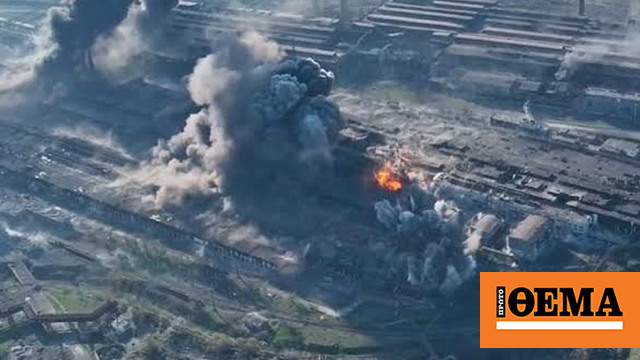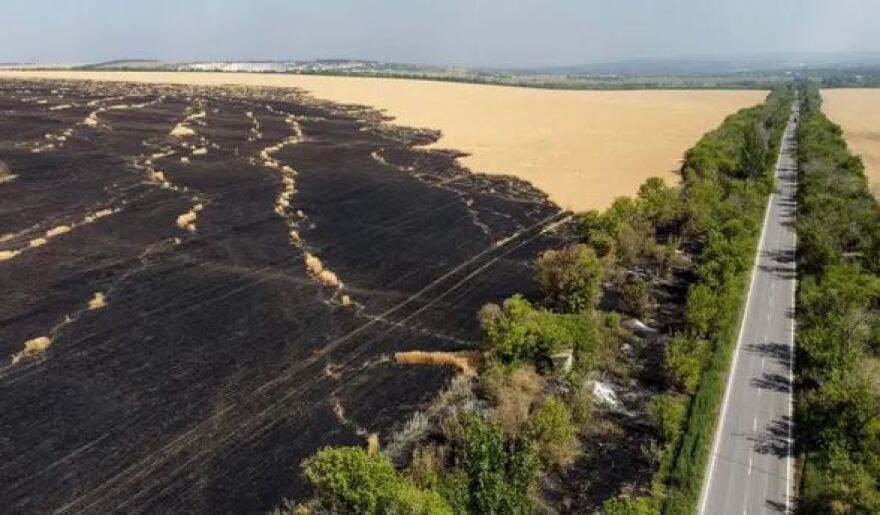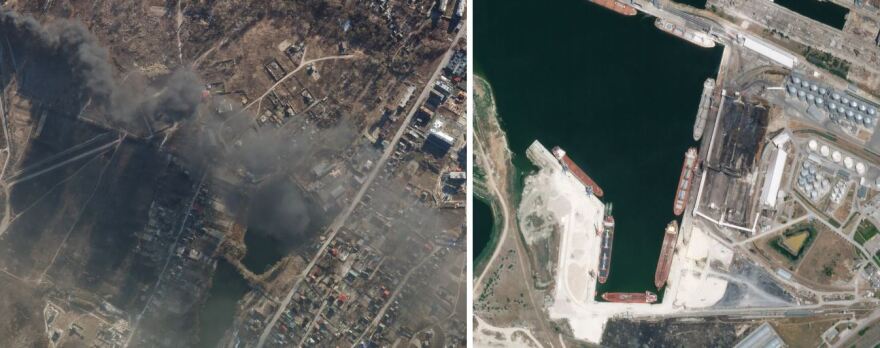
her office Green area Central and Eastern Europe, in cooperation with the Ukrainian organization Ecoaction, has published a map of environmental disasters in Ukraine due to Russian invasion.
This map shows how the invasion destroyed Ukrainian nature. Disaster data has been collected by Ecoaction, cross-referenced with satellite imagery and plotted by Greenpeace. More than 900 cases have been collected, but 30 were chosen for the map to highlight the most important environmental damage. All cases are classified according to the type of disaster and are accompanied by a brief description.
Thus, notwithstanding the horrific tragedy of the loss of thousands of innocent human lives and the uprooting of millions of people, An unprecedented environmental disaster For long-suffering Ukraine. Exactly one year after the Russian invasion, lands and ecosystems have been damaged, missiles have caused fires, and soil and water have been polluted. Fires in industrial areas due to bombing cause additional pollution of air, soil and water.
Also, according to experts, explosions of missiles and munitions create a dangerous mixture of substances and compounds: carbon monoxide and dioxide, nitric acid, nitrous oxide, nitrous oxide, formaldehyde, hydrocyanic acid, and nitrogen.

After the eruptions, the products of chemical reactions are released into the atmosphere. The essentials – carbon dioxide and water vapor – are not toxic, but they exacerbate climate change. Sulfur and nitrogen oxides can also cause acid rain, altering soil pH and harming plants, especially conifers. Acid rain is also dangerous for humans, as well as other mammals and birds, as it affects the mucous glands and respiratory organs.
Restoring nature will be a major part of Ukraine’s recovery.
The war has already destroyed 1.24 million hectares of nature reserves and 3 million hectares of forests.
This map is by @employee And @employee Shows environmental devastationhttps://t.co/ndo5aC0MEm pic.twitter.com/TuQ1TUO3jf
– Greenpeace International February 24, 2023
the Metal fragments from projectiles It is also not safe for the environment. Cast iron mixed with steel is the most common material for ammunition, and contains not only iron and carbon, but also sulfur and copper. These substances seep into the soil and may reach groundwater, thus entering the food chain and affecting humans and animals.
One year ago, Russia attacked Ukraine
➡️ The federal government supports reconstruction with 114 million francs, for example, for schools and hospitals. This is fine, but not enough.
Greenpeace brokers community partnerships with concrete reconstruction projectshttps://t.co/FiY2JOCa9n pic.twitter.com/RtCyDMspBZ
– Greenpeace.ch (@greenpeace_ch) February 24, 2023
30 million hectares of Ukrainian forests were affected
Based on official information, since February 24, 2022, that is, since the beginning of the Russian invasion, they have been affected by the war. 12.4 million acres Land in natural park areas. The hostilities affected 30 million hectares of Ukrainian forests, and 4.5 million hectares of forests are under occupation or war zones.
the Denis TsotsayevThe head of the Greenpeace Central and Eastern European Program for the Green Revival of Ukraine said from Kiev: “Placing destruction on a map is complicated, because much of the liberated territory is likely riddled with mines and other explosives, while parts of Ukraine are still held by Russian forces. This makes it difficult to collect data in these areas. However, it is important that we turn our attention to environmental destruction so that nature restoration becomes an essential part of discussions about Ukraine’s future. Such restoration will require specialized tools, knowledge and commitment, as well as significant funds. This money should be given now, not after the war is over».

For her part, Yevgenia Zasyadko, from EcoAction, said:War affects our nature in the same way it affects our people and our infrastructure. But the environmental damage remains invisible and usually ignored, with the environment being the silent victim. We want to be his voice so that everyone understands the ecological consequences of the Russian war so that nature restoration is included in Ukraine’s recovery plans. After the end of the war, we will feel its negative effects on the environment for a long time. The Ukrainian government is committed to rebuilding our country – and the environment is part of what needs to be restored».
thanks for the international monitoring, More than 30 lignite mines are known to have flooded since 2014, and after the invasion began last year, another 10 have been flooded since June 2022, potentially causing groundwater pollution. The Donbass region is at risk of disasters and poses health risks to the population.
Greenpeace’s office in Central and Eastern Europe and Ecoaction believe that the reconstruction of cities in Ukraine should go hand in hand with the restoration of nature. the Its destruction in wartime is enormousThis will have long-term effects on the lives of people and ecosystems in the affected areas. And for this, as they explained, “we call for action and demand mechanisms and the allocation of financial resources to restore nature in Ukraine. We also encourage support for Ukrainian organizations working to restore this situation and monitor the situation from the field.
today’s news:
Background of Mitsotakis’ visit to Larissa – Innovation Garden, Skewers and… Guns N’ Roses
With Tsipras “Fortunately there are judges in Athens” ND commenting on Baba’s conviction – watch the video
How will the three clean Mondays go – Where will we see the rain

“Hipster-friendly coffee fanatic. Subtly charming bacon advocate. Friend of animals everywhere.”





More Stories
Only two countries will survive in the event of a nuclear war
A ship carrying weapons to Israel was not allowed to dock
New Caledonia: where it is located and what bloody riots are happening on the island